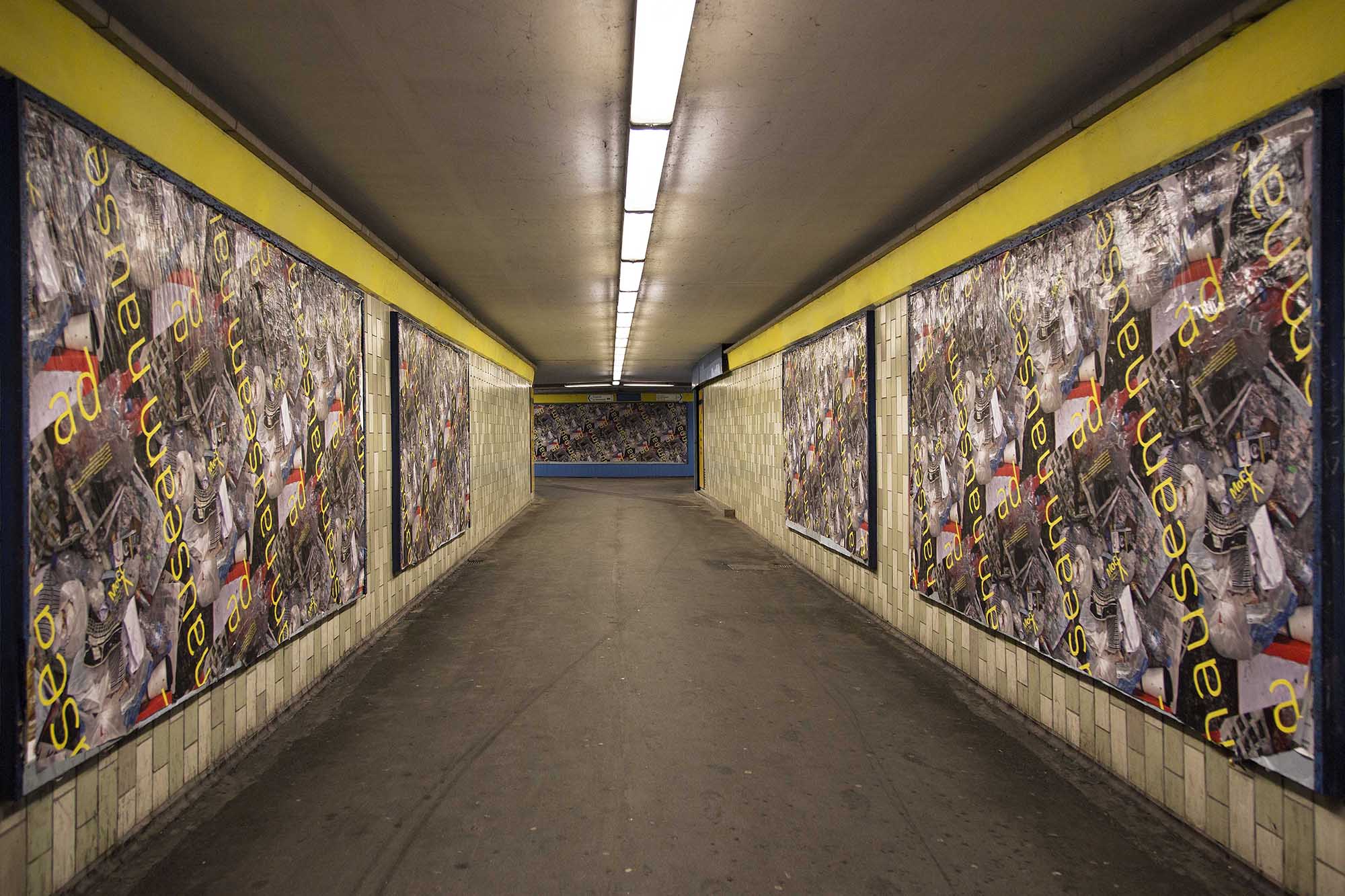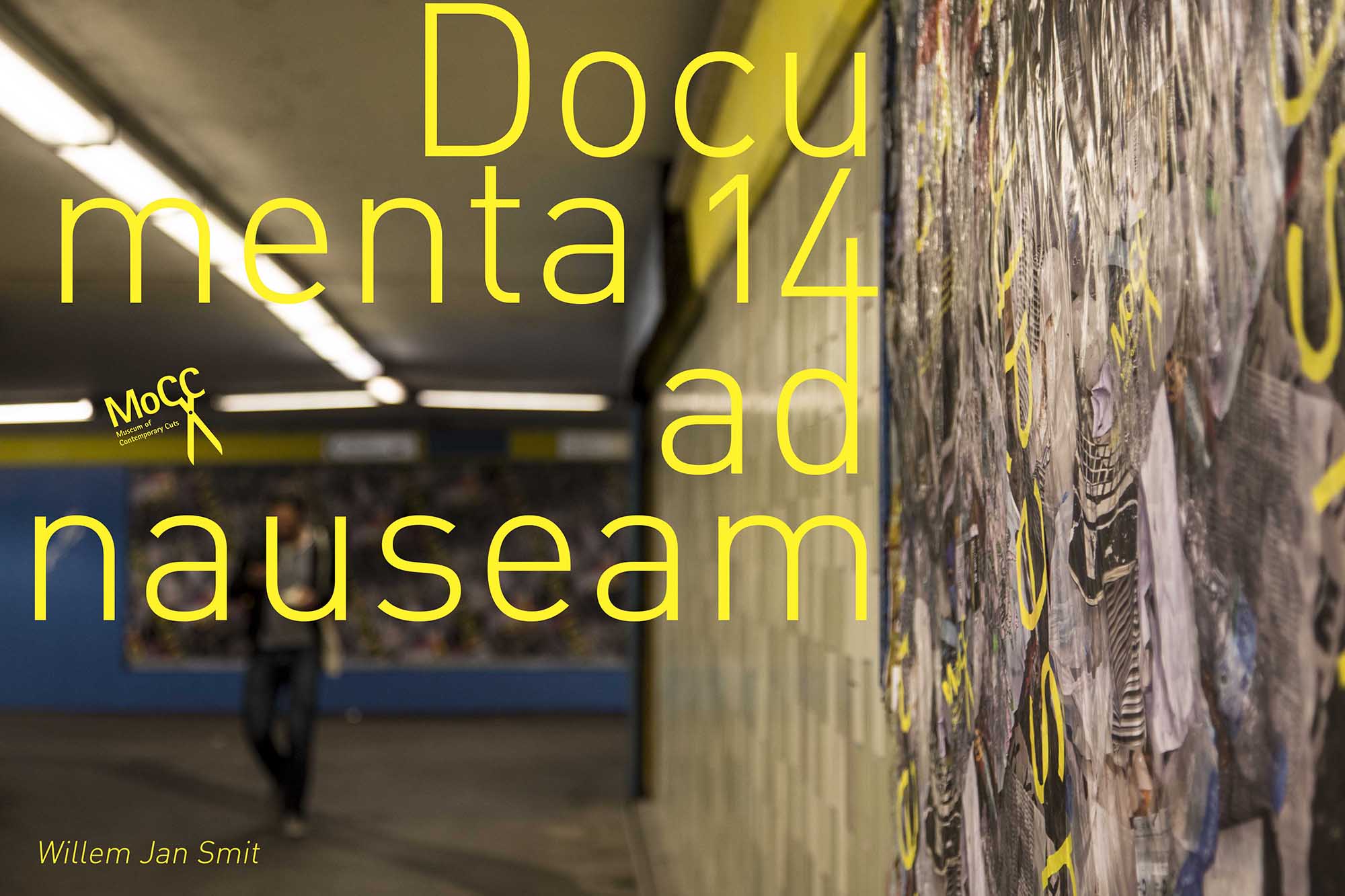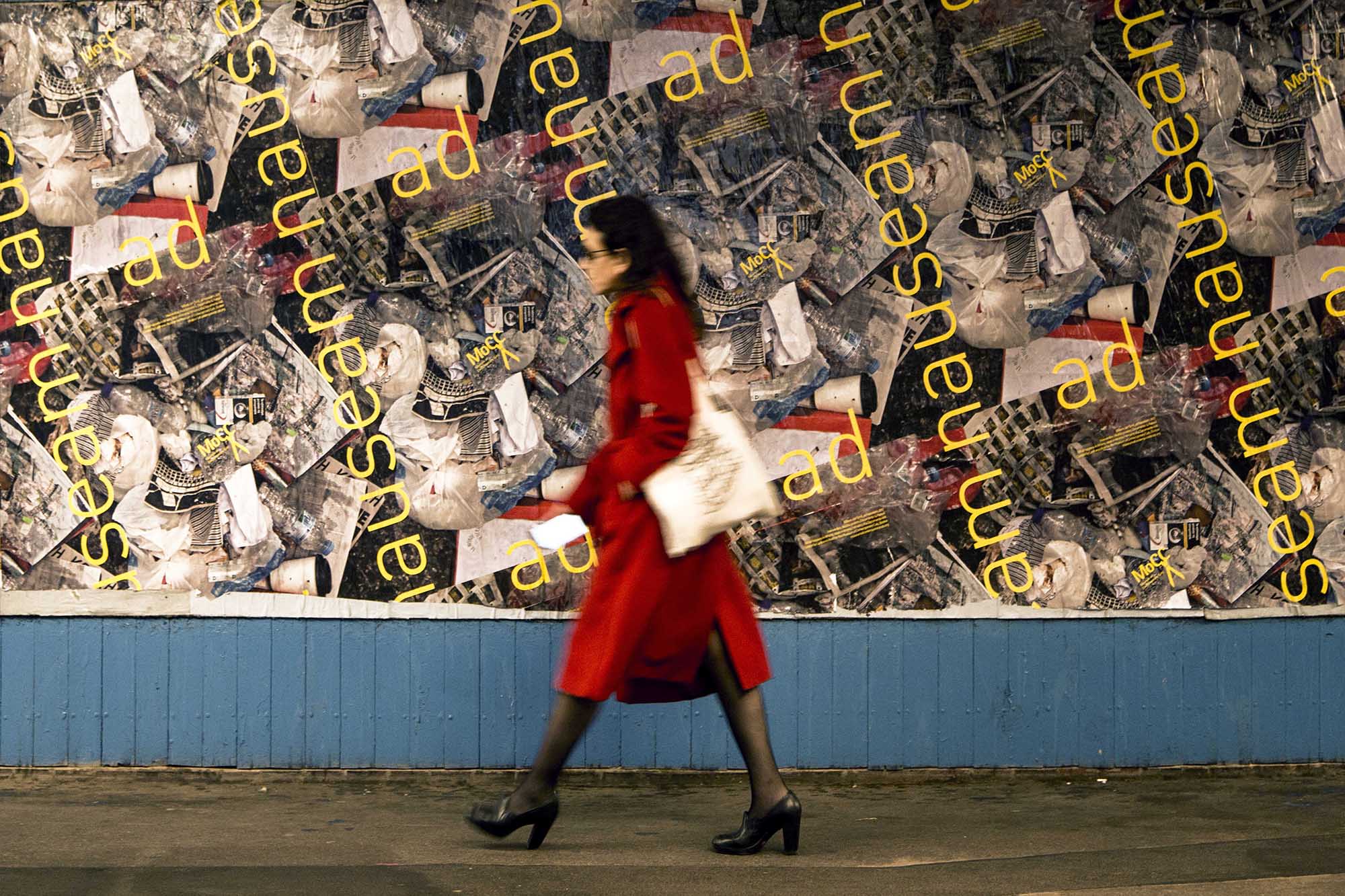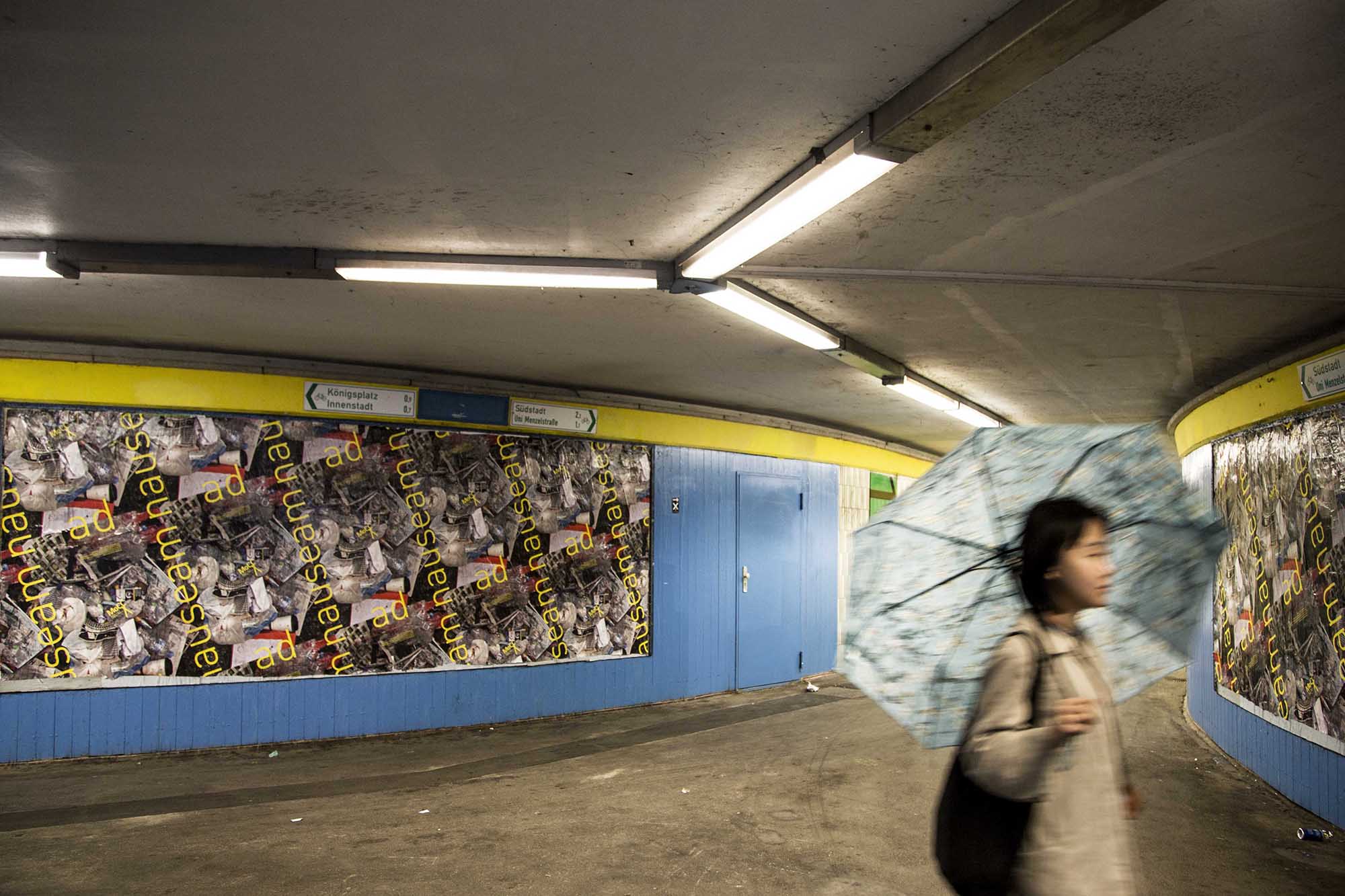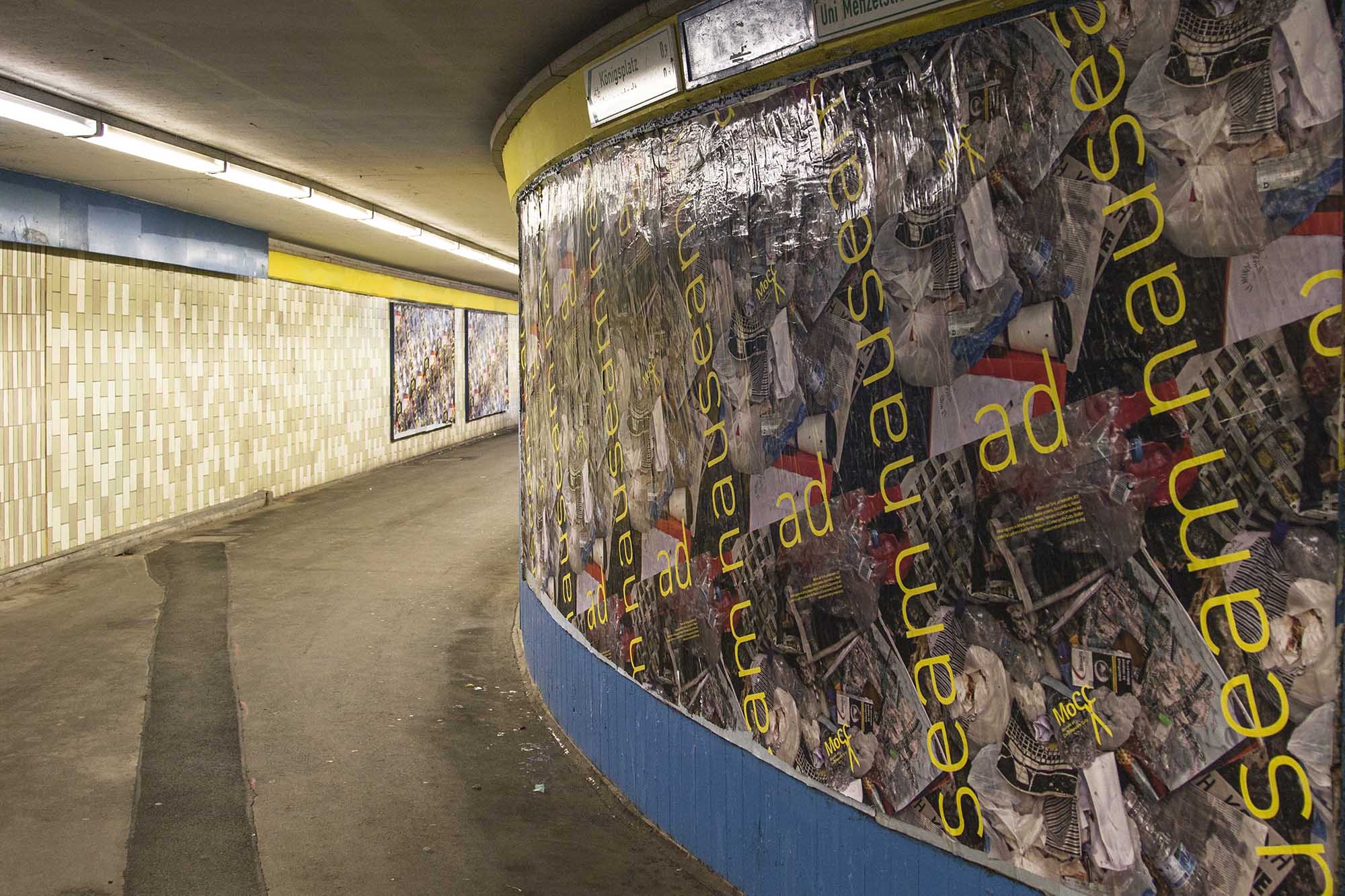As part of its worldwide interventions and art engagements, the Museum of Contemporary Cuts presents ad nauseam at documenta 14 by international artist and activist Willem Jan Smit (NL, ES, DE). Ad nauseam is Willem Jan Smit’s redux from an exhibition of documentary sculpture in Athens titled THEY WERE SHOWN THE DOOR IN A MATTER OF MINUTES, which was received with great critical acclaim and promptly acquired for a private collection.
“A child in the dark, gripped with fear, comforts himself by singing under his breath.…The song is like a rough sketch of a calming and stabilizing, calm and stable, center in the heart of chaos.” [1] The posters—tiled, multiplied, and repetitive in themselves—create a refrain, a visual cue not dissimilar from the tune of a song which repeats itself over and over again. The posters exist both as a single images and as a collective group linked to larger and globalized socio-cultural networks. The photograph displays the collected garbage of a documenta 14 venue in Athens, which includes remnants of publicity and documentation of a quinquennial that attempted to create intercultural dialogue in name but in reality existed as a conflicted process of exploitation.
“The Museum of Contemporary Cuts,” explained the curator, Lanfranco Aceti, “is working with Smit this year because of his original aesthetic approaches and worldviews, which move beyond national boundaries and ghettos of incommunicability by engaging and embracing the contemporary contradictions of local/global public spaces, communities, and networks that exist inside traditional and operational frameworks.”
Smit has addressed the relationship between the space and the object in his aesthetic processes of production by providing a multitude of personal responses to authoritative power. With the public installation of ad nauseam, the artist analyzes the difficulties of intercultural communication and questions the relationship between Kassel and Athens outside the frameworks of body politic and politicized optimism, to generate a statement that challenges the role of institutionally endorsed art and self-aggrandized branding strategies.
It is through these rebelling gestures that Smit argues in Deleuzian term the role of the watchers as those who safeguard, construct, and sell institutionally approved rebellion. “What they watch for are the movements, outbursts, infractions, disturbances, and rebellions occurring in the abyss.… not a line of writing but a line of rigid segmentarity along which everyone will be judged and rectified according to his or her contours, individual or collective.” [2]
The excision and rectification is embedded in the tiled posters which contour the documenta 14 experience of the artist in Athens in an outburst of rebellion against the aesthetic embellishment of art constantly sold as a motif for participation, interaction, and engagement.
Aceti explains, “In his aesthetic practice Smit wanders between documentary sculpture and the less-traditional (and condemned) forms of aesthetic expression which exist at the borders of traditionally conceived art forms. It is this intersemiotic translatability of the aesthetic of the art object that makes Smit’s practice appealing.”
In fact, the artist—although moving between genres and conventions—has developed his own articulated language to point to the servitude of contemporary art and to already enslaved and “blunted forms of rebellion.” As defined by Adorno, “conventions and genres did not just stand in the service of society; many, however, such as topos of the maid-turned-master, were already a blunted form of rebellion.” [3]
It is in the complexity of the institutional engagements, rules, guidelines, and strict behavioral imposition that the artist is able to show his unsuffering of contemporary aesthetic and cultural exploitation. Willingly or unwillingly (but always mostly a-critically), the glittering circus of art participates in the processes of exploitation to reinforce and restate—ad nauseam— the currency of contemporary body politic.
[1] Gilles Deleuze and Félix Guattari, A Thousand Plateaus: Capitalism and Schizophrenia, trans. Brian Massumi (Minneapolis: University of Minneapolis Press, 1987), 311.
[2] Ibid., 200-201.
[3] Theodor Adorno, Aesthetic Theory, trans. Robert Hullot-Kentor (London and New York: Continuum, 2002), 203.
Artist Biography
Artist’s Biography: Willem Jan Smit (NL, ES, DE) is a contemporary artist and activist who has exhibited internationally. He has shown in Canada, Germany, Spain, Italy, Great Britain, Greece, and the United States. His latest intervention was, ad nauseam, at documenta 14, shortly after a solo exhibition for the Museum of Contemporary Cuts, They Were Shown the Door in a Matter of Minutes, in Athens as part of the Platforms Project. Currently he is engaging in a series of public interventions and has been invited to participate in numerous biennials between 2018 and 2019. He studied in Vancouver, Canada with Liz Magor, Geoffrey Farmer, and Garry Neill Kennedy. Smit is preparing a series of performative and process works, as well as participating in a range of international exhibitions with his sculptures and paintings.
His artworks are held in numerous private and public collections.

